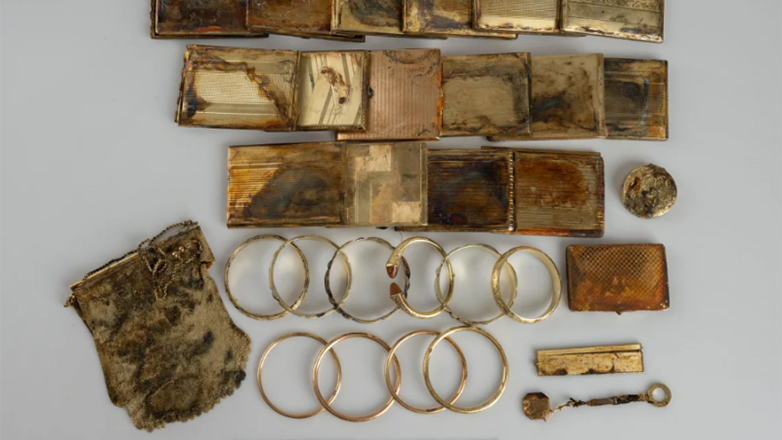Authorities still unsure who the trove belonged to
In an unexpected twist worthy of a movie, two hikers exploring a forest in the Krkonoše Mountains—a popular hiking destination in the Czech Republic—discovered a hidden crypt packed with gold.
Inside the concealed stash, they found a dazzling collection: ten gold bracelets, 17 cigar cases, a powder compact, a comb, and 598 gold coins. The aluminum container was protruding slightly from a stone wall, catching the attention of the hikers, who then carefully opened it.
An Accidental Discovery with Huge Historical Value
After uncovering the treasure, the hikers brought it directly to the Museum of Eastern Bohemia, according to Miroslav Novák, head of the museum’s archaeology department.
“They showed up unannounced at our numismatist’s office,” Novák told CNN. “Only afterward did our archaeologists begin investigating the discovery site.”
Who buried the treasure—and why—remains a mystery. However, one detail offers a crucial clue: one of the gold coins is dated 1921, suggesting the cache is less than a century old.
Tied to War and Upheaval? Experts Weigh In
According to Novák, the stash may be connected to tumultuous historical events. “It likely relates either to the chaotic years before World War II, when Czech and Jewish populations fled the border regions, or to 1945, when the Germans were retreating,” he speculated.
Two of the cigar cases were sealed shut, but the gold coins alone weigh 3.7 kilograms (8.2 lbs) and are estimated to be worth 8 million Czech crowns—about $360,000, according to Vojtěch Brádle, the museum’s coin expert.
Whispers and Rumors: Clues From the Community
News of the discovery quickly stirred local interest, and Novák says the museum has received several calls with rumors and theories, some of which may help unravel the puzzle.
One striking aspect? None of the coins are Czech. “Half appear to be of Balkan origin, the other half French,” Novák noted. “There’s a total absence of Central European currency like German coins, which is surprising given the cache was found near the historical Czech-German border.”
Possible Origins: Wealthy Families or War Spoils?
One theory is that the gold belonged to wealthy families in the area. Another posits that it could be war loot hidden by members of the Czechoslovak Legion.
Finds like this are unusual for the region, Novák emphasized. However, he mentioned that about 9 kilometers southeast, a separate treasure was discovered a decade ago: 2,700 silver denarii from the 12th century, a type of European trade currency.
“Many residents abandoned this region during the 20th century, which explains the number of deserted farmsteads still visible today,” he added.
A Rare Find for the 20th Century
Brádle agrees that this discovery is atypical. “Most 20th-century finds in the Czech Republic include primarily German and Czechoslovak coins. Here, there’s not a single one,” he told the American outlet.
“Most of these coins likely didn’t arrive in Bohemia directly. They may have come from the Balkans after World War I. Some are reproductions from the former Yugoslavia, minted during the 1920s or 1930s,” he explained.
Further research is now underway to determine the composition of the other objects found in the crypt, which could provide a more complete valuation and historical context for this unexpected forest treasure.
One thing is certain: this forest in the Krkonoše Mountains has kept a secret for nearly a century—and it's just beginning to tell its story.







